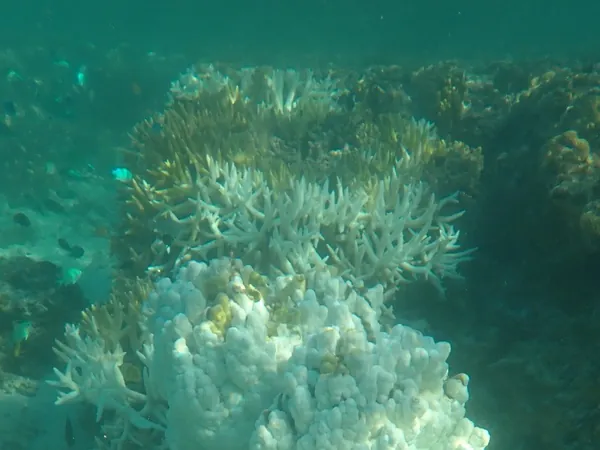
Catastrophic Coral Bleaching Crisis Unfolds on the Great Barrier Reef
2025-01-22
Author: Wei
Overview of the Crisis
The Great Barrier Reef, a UNESCO World Heritage site and one of the most vital ecosystems on the planet, is currently grappling with catastrophic coral bleaching, with alarming consequences for marine biodiversity and local communities. A peer-reviewed study by marine scientists at the University of Sydney has brought to light the devastating impact of unprecedented marine heatwaves on the southern Great Barrier Reef during the ongoing global marine heatwave of 2023-2024.
Importance of Coral Reefs
Coral reefs are not just underwater wonders; they play a crucial role in supporting fisheries, tourism, and coastal protection. A 2017 study valued the Great Barrier Reef at an astonishing A$56 billion, emphasizing its importance not only to marine life but also to human economies. Unfortunately, the escalating climate crisis poses increasing threats to this natural treasure.
Research Findings
Led by Professor Maria Byrne, the recent research published in *Limnology and Oceanography Letters* has documented severe coral bleaching events that have unfolded in record time. The team assessed the health of 462 coral colonies located at the University of Sydney’s research station on One Tree Island over a span of 161 days. Alarmingly, they found that 66% of the colonies were bleached by February 2024, escalating to 80% by April. By July, a staggering 44% of these bleached colonies had perished, with some coral species like Acropora suffering a dire 95% mortality rate.
Call for Collaborative Conservation
The urgency of the situation has prompted researchers to call for a 'collaborative approach' to conservation, urging the involvement of local communities, scientists, and policymakers. Professor Byrne highlighted the critical need for immediate action to protect these ecosystems, which are not only biodiversity hotbeds but also integral to food security and coastal defense.
Status and Future of the Reef
Despite its protective status, the southern Great Barrier Reef was not spared from the extreme heat stress responsible for this catastrophic event. Co-author of the study, Professor Ana Vila Concejo, stated that the findings should serve as a wake-up call for both policymakers and conservationists.
Innovative Solutions
Dr. Shawna Foo, another co-author, emphasized that while the reef’s protected status has not shielded it from the heatwave's effects, its potential role in recovery is vital and should be closely monitored. In light of the persistent threats facing coral reefs, innovative solutions are being developed. Notably, scientists from the Australian Institute of Marine Science created a floating biodegradable film composed of calcium carbonate, just 50,000 times thinner than a human hair. This remarkable 'sun shield' has demonstrated the potential to protect coral from the harsh effects of sunlight, acting as a temporary but critical barrier against bleaching.
Conclusion
As we stand on the brink of irreversible damage to these unique ecosystems, the call to action has never been clearer. If drastic measures are not taken soon, the Great Barrier Reef, along with its invaluable contributions to our ecosystem and economy, may face an uncertain future. It is up to all of us—policymakers, scientists, and local communities—to rally together to protect this natural wonder before it is too late.



 Brasil (PT)
Brasil (PT)
 Canada (EN)
Canada (EN)
 Chile (ES)
Chile (ES)
 Česko (CS)
Česko (CS)
 대한민국 (KO)
대한민국 (KO)
 España (ES)
España (ES)
 France (FR)
France (FR)
 Hong Kong (EN)
Hong Kong (EN)
 Italia (IT)
Italia (IT)
 日本 (JA)
日本 (JA)
 Magyarország (HU)
Magyarország (HU)
 Norge (NO)
Norge (NO)
 Polska (PL)
Polska (PL)
 Schweiz (DE)
Schweiz (DE)
 Singapore (EN)
Singapore (EN)
 Sverige (SV)
Sverige (SV)
 Suomi (FI)
Suomi (FI)
 Türkiye (TR)
Türkiye (TR)
 الإمارات العربية المتحدة (AR)
الإمارات العربية المتحدة (AR)